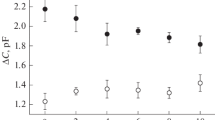Abstract
The 26 amino acid bee venom toxin, melittin, is an amphipathic helical polypeptide which inhibits the gastric (H+ + K+)ATPase. The site of interaction with the (H+ + K+)ATPase was shown to be the alpha subunit of the (H+ + K+)ATPase in studies using [125I]azidosalicylyl melittin, a radioactive photoaffinity analog of melittin. A synthetic amphipathic polypeptide (Trp3) containing tryptophan, which exhibits a structure similar to that of melittin, also inhibited the gastric (H+ + K+)ATPase, and prevented labeling by [125I]azidosalicylyl melittin. These findings suggested that melittin and the synthetic amphipathic helical polypeptide were bound to the same or overlapping site(s). In the present studies, novel tritiated photoaffinity analogs of Trp3 containing benzoylphenylalanine (in place of tryptophan) were used to photoaffinity label the (H+ + K+)ATPase. These studies help to establish that the (H+ + K+)ATPase contains a binding site for polypeptides which exhibit an amphipathic helical motif. The precise amino acid sequence of the polypeptide appears to be of secondary importance for interaction with the (H+ + K+)ATPase as long as the alpha helical motif is present. The benzoylphenylalanine containing polypeptides are ideal for mapping the binding site on the (H+ + K+)ATPase. Using an antibody which recognizes this amphipathic helical (‘melittin-like’) motif, we have demonstrated that the gastric parietal cell contains a 67 kDa ‘melittin-like’ protein. This protein was associated with the gastric parietal cell apical membrane in the stimulated (secreting) state, but not in the resting (non-secreting) state. The binding site for the gastric ‘melittin-like’ protein appears to overlap with the melittin binding site on the alpha subunit of the (H+ + K+)ATPase. The potential physiological significance of the melittin binding site and the overlapping binding site for this newly identified endogenous ‘melittin-like’ protein on the (H+ + K+)ATPase to regulated HCl secretion by the parietal cell is presently under investigation. Evidence is presented which demonstrates that melittin binds to other E1-E2 ion pumps, raising the possibility that there might exist similar intracellular proteins which interact with other ion pumps.
Similar content being viewed by others
References
Ganser AL, Forte JG: K+-stimulated ATPase in purified microsomes of bullfrog oxyntic cells. Biochim Biophys Acta 307: 169–180, 1973
Sachs G, Chang HH, Rabon W, Schackman R, Lewin M, Saccomani G: A non-electrogenic H+ pump in plasma membranes of hog stomach. J Biol Chem 251: 7690–7698, 1976
Cuppoletti J, Sachs G: Regulation of gastric secretion via modulation of a chloride conductance. J Biol Chem 259: 14952–14959, 1984
Reenstra WA, Forte JG: Characterization of K+ and Cl− ccnductances in apical membrane vesicles from stimulated rabbit oxyntic cells. Am J Physiol 259 (Gastrointest and Liver Physiol 22): G850-G858, 1990
Malinowska DH: Cl− channel blockers inhibit acid secretion in rabbit parietal cells. Am J Physiol 259 (Gastrointest and Liver Physiol 22): G536-G543, 1990
Saccomani G, Psarras CG, Smith PR, Kirk KL, Shoemaker RL: Histamine-induced chloride channels in the apical membrane of isolated rabbit parietal cells. Am J Physiol 260 (Cell Physiol 29): C1000-C1011, 1991
Cuppoletti J, Baker AM, Malinowska DH: Cl− channels of gastric parietal cell H/K ATPase-containing membrane preparations. Am J Physiol (Gastrointest and Liver Physiol), submitted, 1991
Shull GE, Lingrel JB: cDNA cloning of the beta subunit of the rat gastric (H+ + K)ATPase. J Biol Chem 261: 16788–16791, 1986
Canfield VA, Okamoto CT, Chow D, Dorfman J, Gros P, Forte JG, Levinson R: Cloning of the (H+ + K+)ATPase B subunit: tissue specific expression, chromosomal assignment, and relationship to (Na+ + K+)ATPase B subunit. J Biol Chem 265: 19878–19884, 1990
Hugues M, Romey G, Duval D, Vincent JP, Lazdunski M: Apamin as a selective blocker of the calcium-dependent potassium channel in neuroblastoma cells: Voltage-clamp and biochemical characterization of the toxin receptor. Proc Natl Acad Sci USA 79: 1308–1312, 1982
Cuppoletti J, Blumenthal KL, Malinowska DH: Melittin inhibition of the gastric (H+ + K+)ATPase and photoaffinity labeling with [125I]azidosalicylyl melittin. Arch Biochem Biophys 275: 263–273, 1989
Cuppoletti J: [125I]Azidosalicylyl melittin binding domains: Evidence for a polypeptide receptor on the gastric (H+ + K+)ATPase. Arch Biochem Biophys 278: 409–415, 1990
Cuppoletti J, Abbott A: Interaction of melittin with the (Na+ + K+)ATPase: Evidence for a melittin-induced conformational change. Arch Biochem Biophys 283: 249–257, 1990
Cuppoletti J, Huang P, Malinowska DH: A stimulus-associated protein in the gastric parietal cell detected using antimelittin antibody. Am J Physiol (Gastrointest and Liver Physiol), submitted, 1991
O'Neil K, Erickson-Viitanen S, DeGrado WF: Photolabeling of calmodulin with basic, amphiphilic α-helical peptides containing p-benzoylphenylalanine. J Biol Chem 264: 14571–14578, 1989
Batenburg AM, van Esch JH, Leunissen-Bijvelt J, Verkleij AJ, de Kruijff B: Interaction of melittin with negatively charged phospholipids: consequences for lipid organization. FEBS Lett 223: 148–154, 1987
Needham L, Dodd NJF, Houslay MD: Quinidine and melittin both decrease the fluidity of liver plasma membranes and both inhibit hormone-stimulated adenylate cyclase activity. Biochim Biophys Acta 899: 44–50, 1987
Cox JA, Comte M, Fitton JE, DeGrado WF: The interaction of calmodulin with amphipathic peptides. J Biol Chem 260: 2527–2534, 1985
Lukas TJ, Burgess WH, Prendergast FG, Lau W, Watterson DM: Calmodulin binding domains: characterization of a phosphorylation and calmodulin binding site from myosin light chain kinase. Biochemistry 25: 1458–1464, 1986
Bullough DA, Cecarelli EA, Verburg JG, Allison WS: Inhibition of the bovine-heart mitochondrial F1-ATPase by cationic dyes and amphipathic peptides. J Biol Chem 264: 9155–9163, 1989
Kaetzel MA, Dedman JR: Affinity purified melittin antibody recognizes the calmodulin binding domain on calmodulin target proteins. J Biol Chem 262: 3726–3729, 1987
Segel IH: Enzyme Kinetics. Wiley-Interscience, New York, 1975
Author information
Authors and Affiliations
Rights and permissions
About this article
Cite this article
Cuppoletti, J., Malinowska, D.H. Interaction of polypeptides with the gastric (H+ + K+)ATPase: melittin, synthetic analogs, and a potential intracellular regulatory protein. Mol Cell Biochem 114, 57–63 (1992). https://doi.org/10.1007/BF00240298
Issue Date:
DOI: https://doi.org/10.1007/BF00240298



